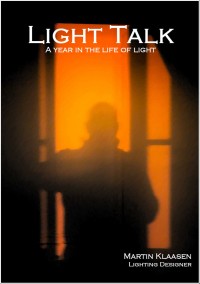Lighting with translucent materials
Singapore, 9th March 2010
Lighting does not exist without its environment, the architectural envelope that defines our field of view. Most of the time, we design lighting with solid reflective materials in mind. From matt surfaces to glossy surfaces and from white to black via the whole color spectrum. It is important for us to understand the nature of these materials in respect to its reaction to incident light and how the reflected light will subsequently be dispersed back into the surrounding space.
Translucent materials are a different kettle of fish. Thought they still reflect light to a certain degree, their main characteristic is that they let light through or allow you to see “through” the material. I am talking about glass, acrylic or alabaster type of materials, but also perforated materials and textiles such as scrim curtains, canvas, etc. I think that as lighting designer we can use these materials to our advantage as tools in our lighting designs. It allows us to create different and sometimes unexpected lighting effects and moods.
An interesting phenomenon with these materials is that when you light it from or in the front (as seen from your observer position) the material reflects light creating a visual barrier in space. However when you light it from or in the back the illumination allows you to see “through” the object material. For instance, in order for you to see inside a shop window, the lighting levels inside needs to be brighter then outside. We all know the window reflections when the sun shines outside…Likewise at night if we want to see outside into the garden, we can only see if outside has brighter lighting levels then inside otherwise the only thing we see is our own reflection in the window… 🙂
One of the latest trends is to use one way mirror materials. For example TV screens located behind such mirrors cannot be seen until they are switched on to miraculously appear behind the mirror.

 The long awaited book compilation of Martin's first year of blogging is available. Order now.
The long awaited book compilation of Martin's first year of blogging is available. Order now. Feedspot Top 100 Lighting Blogs
Feedspot Top 100 Lighting Blogs